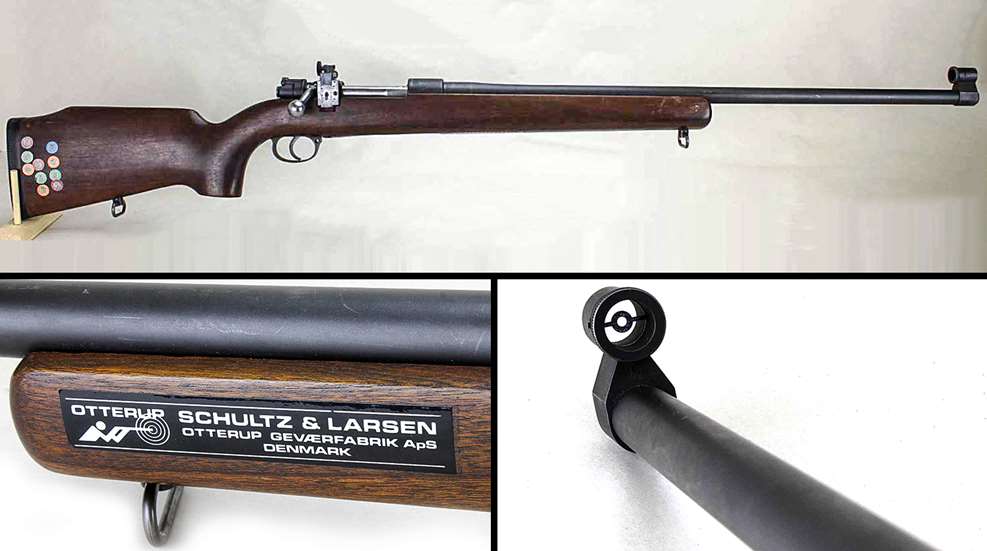
What have we got here? A rifle with an interesting conglomeration of features, including: a Brazilian crest on the DWM Model 98 Mauser receiver; a long, heavy barrel stamped, “6,5x55” and “DDSG&I;” a beefy stock proportioned for prone shooting; front and rear aperture sights; a Schultz & Larsen sticker on the left side and a chart stuck on the bottom of the forearm. Obviously a competition rifle, but what?
Gun Club Guns
For 99 years, the U.S. Army’s Director of Civilian Marksmanship worked closely with NRA to train civilians in marksmanship against the times when competitors would need to bring those skills to active duty—as they did in two world wars and conflicts since then. The U.S. government ceased active support of civilian marksmanship training and competition in 1996 when the Clinton Administration and Congress terminated the DCM, an office established by President Theodore Roosevelt in 1907.

But there was a time when a great many governments encouraged and supported shooting competition; this was especially true in Cold War Western Europe, where Soviet military expansion pressed alarmingly against the borders of free nations. Following WWII, several countries decided to utilize the seemingly unlimited numbers of Mausers as the basis for manufacturing “club rifles.” Built for local gun clubs affiliated to engage in formal amateur competition, shooters used these bolt-action rifles for competition out to 600 meters.
Among these club rifles, the Swedish Carl Gustafs are perhaps the most well-known. Beginning in 1963, Carl Gustafs converted many Swedish Model 94 carbines and Model 96 rifles into the model CG 63 chambered in 6.5x55mm and 7.62x51 NATO. Conversion included fitting heavy, free-floated barrels, front and rear aperture sights and target stocks. Carl Gustafs built approximately 60,000 club rifles, which developed into the models CG 73, CG 74 and CH 80.
Denmark’s Own
In addition to Carl Gustafs, others made club rifles built mostly on Model 98 Mauser actions, including Norma, Shultz & Larsen, as well as a few government approved military and civilian armorers.
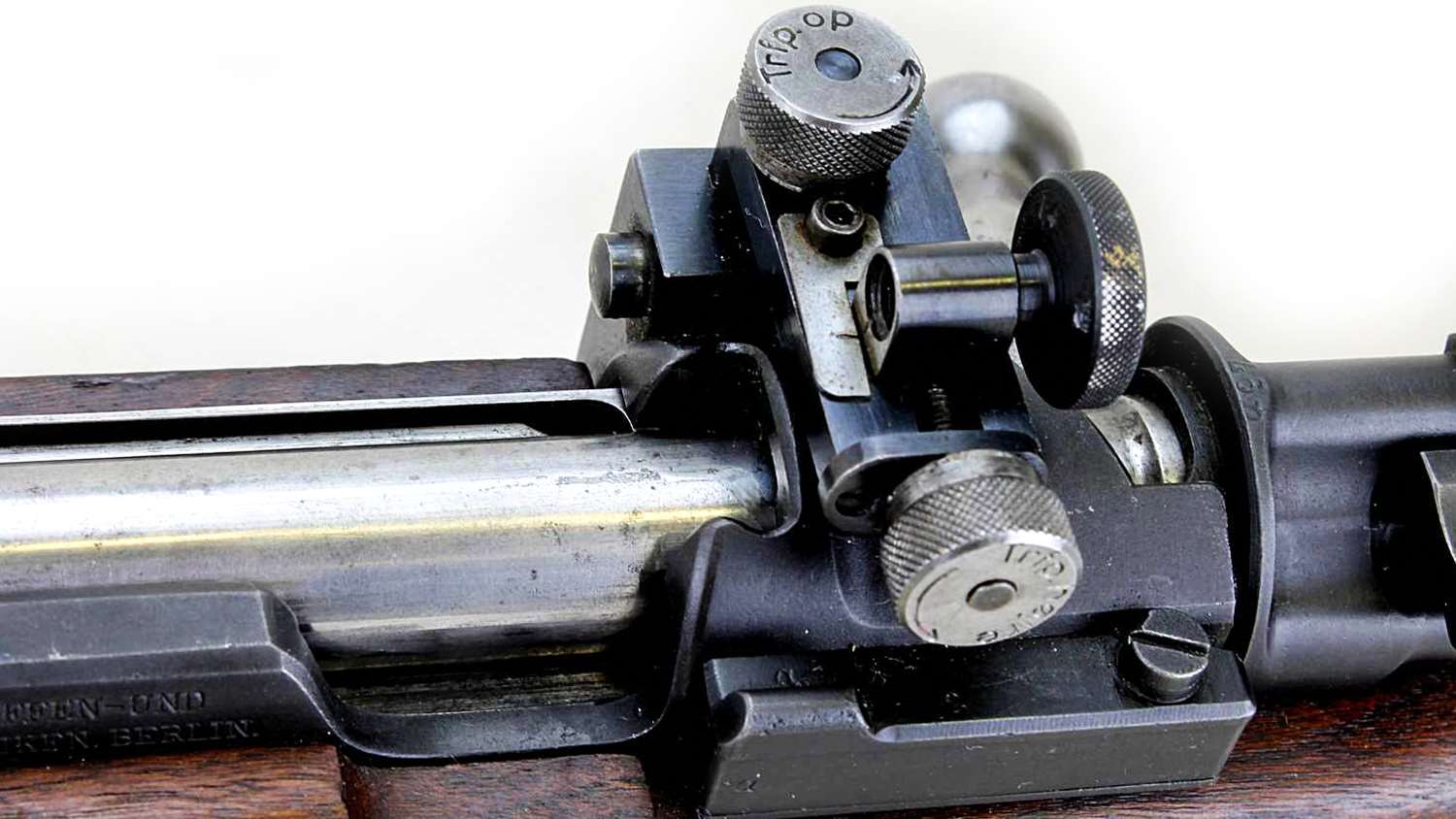
Schultz & Larsen in Otterup, Denmark, made several M98 Mauser-based variants of the club rifle, which they dubbed M52, M58, M58E and M69. Each succeeding model was a step in the evolution that turns a battle rifle into a competition rifle, piece by piece. In addition to target-grade barrels, the M52 and M58, with either straight or turned-down bolt handles, had polished military triggers and military stocks modified by shortening the fore-end. The M52 sported a rear sight like that on an M1 Garand (not coincidentally, as Denmark received Garands from the U.S. for its armed forces) while the M58 was pretty much the same beastie, but with precision aperture target sights made by Schultz & Larsen. The M58E exchanged the cut down military stock for a full-on beefy target-style stock with a pronounced pistol grip for prone shooting. The M69 improved upon the M58E with a Schultz & Larsen adjustable trigger and a press-fit (rather than dovetailed) front sight mounting. Club rifles sprouted target sights made by Busk, Elite, Faldt, GF, Hauges, Hellqvist, Hooka, Lyman, Pramm, Soderin and perhaps others.
M58? M69?
Examining the rifle presented here, though the importer’s stamp identifies it as an M58, that adjustable trigger and front sight mounting are features several references indicate are found on the Model 69. The apparent reality is that, as rifles evolved from one model to the next, some individual rifles shared features of several different models. For simplicity’s sake, we’ll call this one a Model 69.
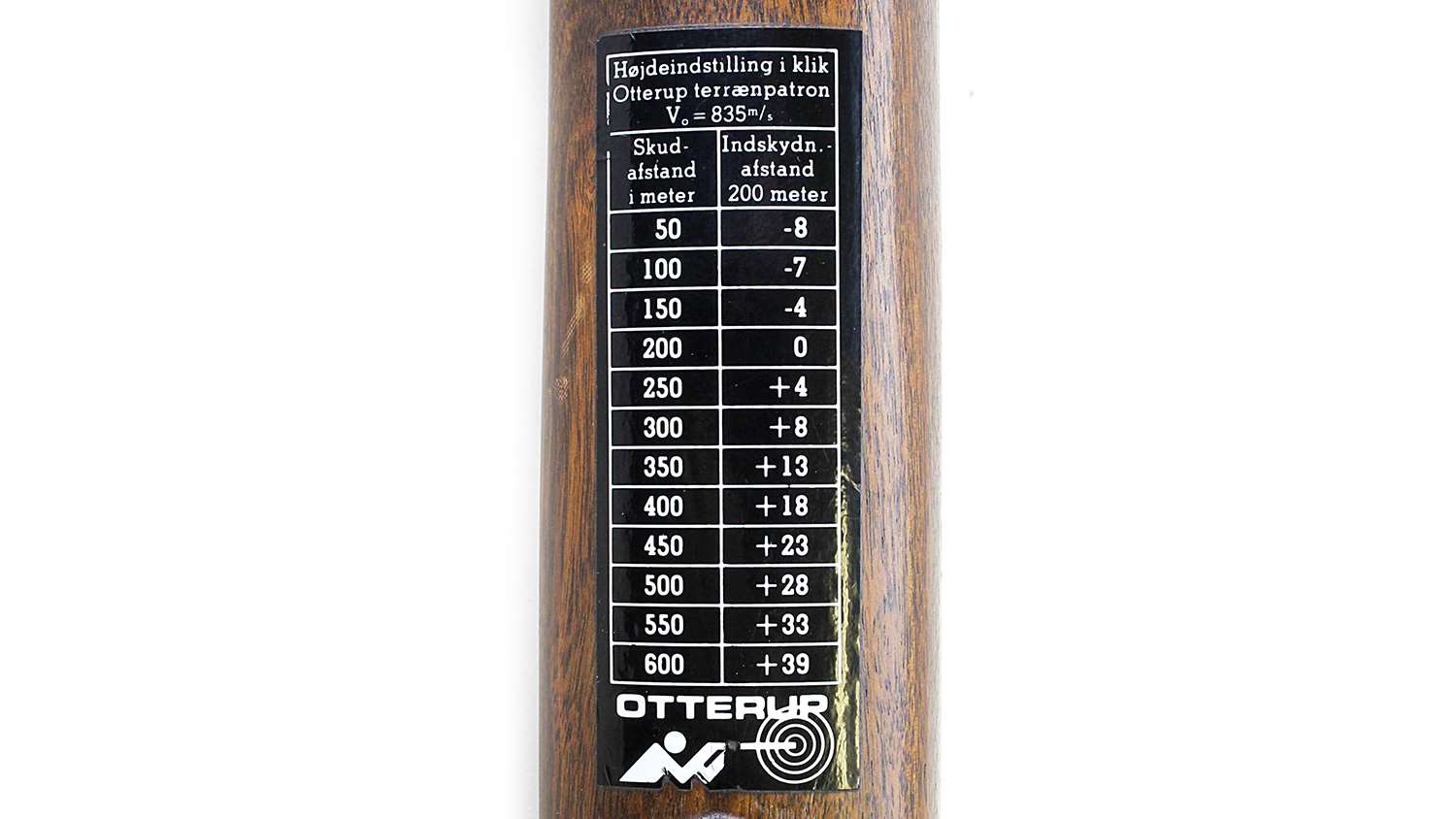
Its heart is a Model 1908 Mauser action that retains its Brazilian crest. How it got from Brazil to Denmark is a story left to our imagination. The heavy 28-inch (71cm) barrel is about one inch in diameter at the receiver, tapering to about ¾ inch at the muzzle (19mm and 17.5mm, respectively). Though several sources report a 1:9-inch twist, careful, repeated measurement reveals a 1:8¼-inch twist on this rifle, suitable for a 140-grain (1.9 gram) bullet. The overall, matte gray/black metal finish seems to be a phosphate. There are no stamped metal parts.
The barrel bears the stamps, “DDSG&I” and the caliber, 6.5x55 Swedish. The “DDSG&I” stamp is a story of its own that explains why these club rifles are sometimes described as “Danish CMP” rifles. The acronym stands for, “De Danske Skytte-Gymnastik & Idrætsforeninger,” which translates to, “Danish Shooting, Gymnastics and Sports Associations.” This organization has roots going back to the Sports Confederation of Denmark of 1896, which at that time represented nine different sports, its purpose to set uniform rules for competitions and at least some of its income provided by government grants. It morphed over the years, and in 1930 reorganized as DDSG&I. Today, it’s absorbed into the National Olympic Committee and Sports Confederation of Denmark.
Stickers
The Schultz & Larsen sticker on the left side of the forearm is a bit of advertising that IDs the rifle’s maker; the sticker on the bottom of the forearm is a chart of rear sight come-ups. Online translators, with some amusing permutations, assure us the information is what we’d surmise: a 200-meter zero with a specific bullet (“terræn patron” translates unhelpfully to “terrain cartridge”) at 2740 fps (835 m/sec) requires 39 clicks of come-up when moving back to 600 meters. The butt bears small, round stickers that appear to indicate individual DDSG&I sponsored matches.
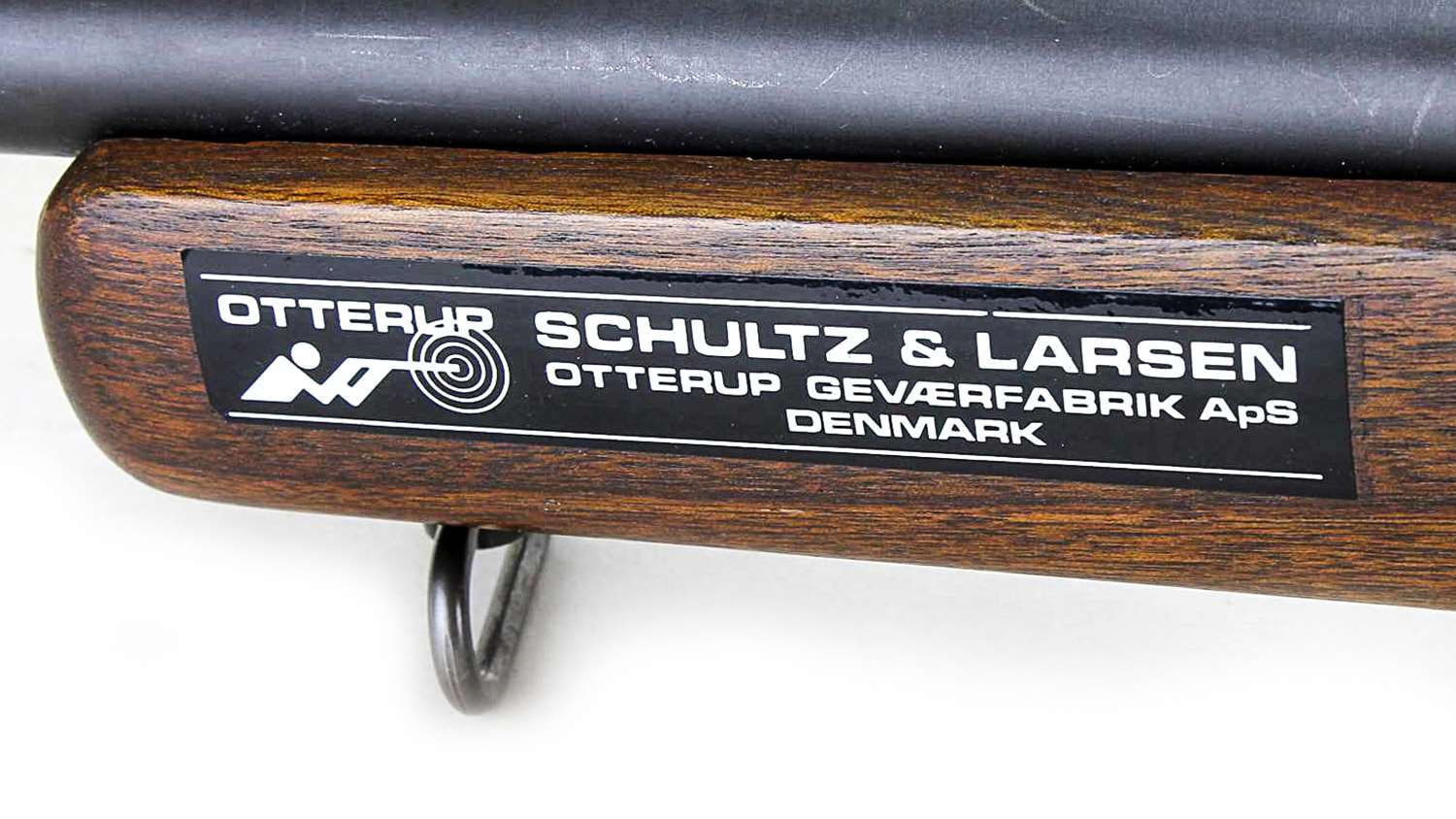
Sights: Not Too Mysterious
The quality aperture sights have no marks identifying maker or model; they may be Schultz & Larsen originals. As purchased from an import house, the rifle came without any extra front sight inserts; Anschutz inserts fit, but that doesn’t necessarily mean they are Anschutz sights. Adjustments are very positive and repeatable, as we’d expect on a match rifle from a land where the shooter may be wearing gloves, and appear to move bullet impact just shy of ½ MOA, about .40 inch, per click. That equates to roughly 10mm per click at 100 meters, which is sensible on a European target rifle and fine enough for the club rifle’s purpose.
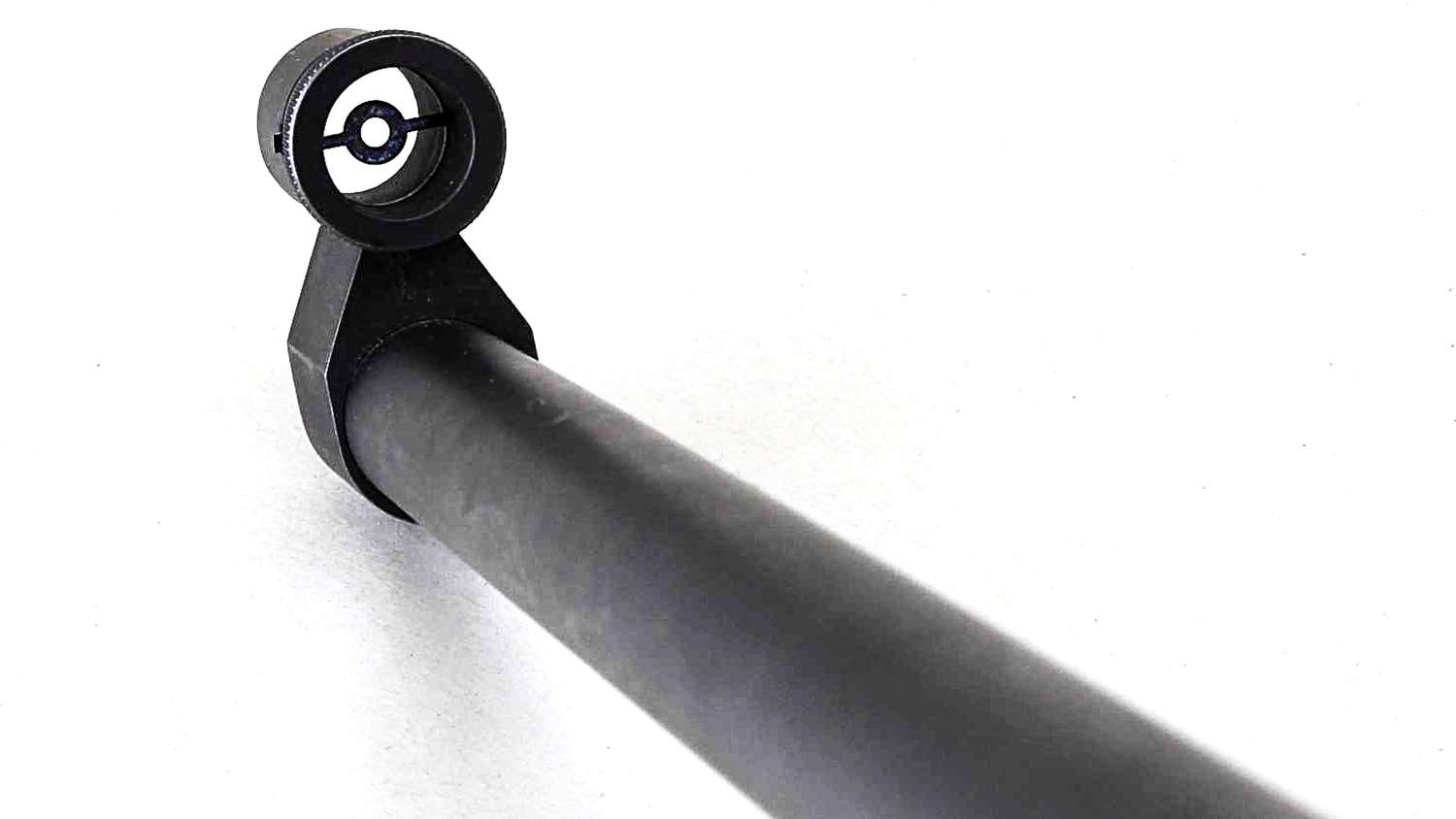
Trigger
The Schultz & Larsen trigger appears to be fully adjustable (see diagram). Frankly, as received the trigger breaks at a very consistent 3¾ pounds; there’s no reason to fiddle with something that’s working fine, so I’ve never tampered with it.
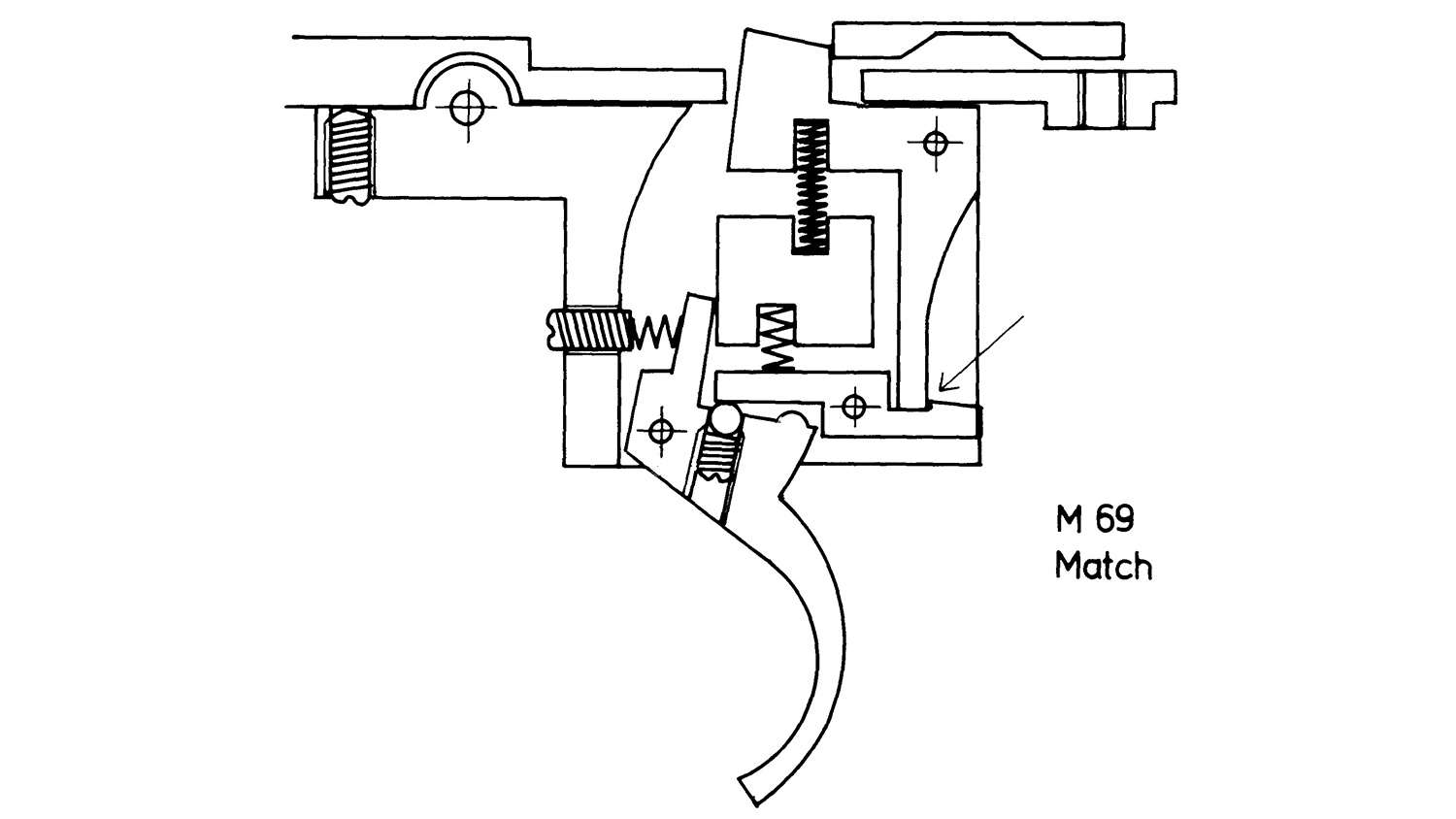
Load & Shoot
This Dane is as long in the throat as it is in the tooth. Seating Berger VLD bullets to .001 inch off the rifling for best accuracy made cartridge overall length (COL) far too long to allow feeding through the magazine, which required seating bullets .207 inch deeper into the case and subsequently doubling group sizes. That pretty much makes it a single-loading only proposition, precluding its use as an across-the-course rifle—at least with bullets of such secant ogive. Additional, dedicated load development with other bullets may change that.
Just a little bit of experiment found that 42 grains of Hodgdon H4831SC lit with a Federal 210M primer will print Berger’s superb 140-grain VLD bullet into fairly round 1-inch groups at 100 yards. Further experiment may reduce or round groups a bit more, but 1 MOA from an old-school rifle isn’t too shabby. The rifle’s first, and so far only outing at a 600-yard match turned in a 174-8X (with a single, unchallenged miss—don’t ask). Again, not too shabby.
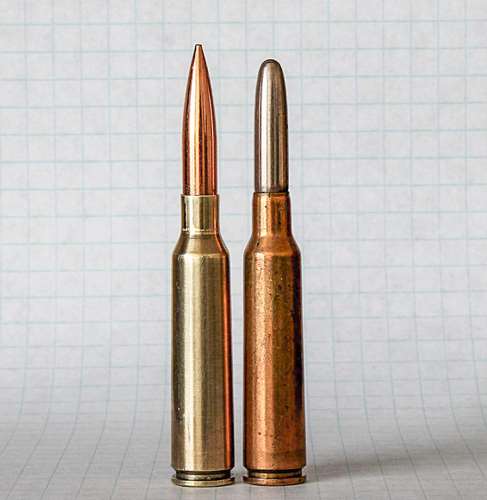
Technology has improved the precision of target rifles since the 1960s. Ergonomics in particular have become much more individualized, readily adjusting the rifle to fit the shooter. Club rifles were a “one size fits all” approach with the underlying collateral intent that competition, at its core, was to prepare the individual for possible future military defense of country. To that end, rifles of basic military design were desirable, anyway.
In the hands of shooters of comparable skill level, the 60-year-old club rifle isn’t likely to keep up with the 21st century tube gun. Still, many of them shoot well. On the one hand we might today consider one of these old-timers as a practical, entry level competition rifle at a fraction of the cost of a new match gun. But another hand holds that competition isn’t always about dollars and winning. On this other hand there is an undefinable appreciation in slinging-in to leather, wood and steel to shoot a genuine piece of Cold War history, and satisfaction in puzzling out and adjusting to the mechanics of the way things used to be.


































